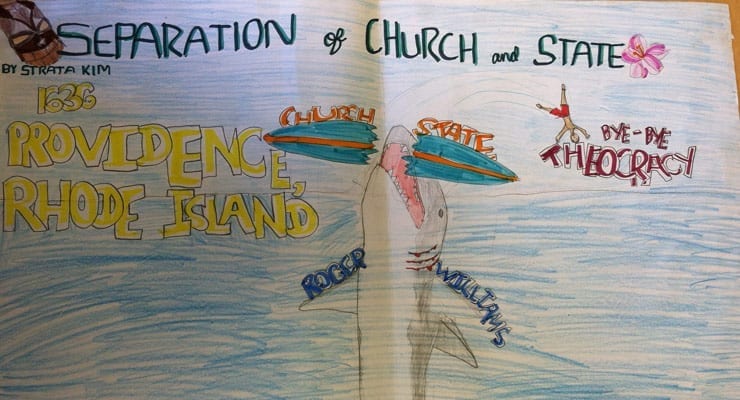The following is a guest post by Jeff Lantos, a 5th grade teacher at Marquez Elementary School.
This week my fellow teachers and I will greet our new students and begin implementing the lessons we’ve outlined in our plan-books. Most of these lessons will focus on math and language arts. In fact, most mornings will be devoted exclusively to those two subjects. The reasons for that are obvious. To function in our society, people must be able to read, write, add and subtract. There’s also the fact that every spring all California students are formally assessed in math and language arts, and those test scores follow them through the grades, functioning as a kind of academic resume. To the public education overseers, students are what the test scores say they are. And increasingly, those scores are being used to evaluate teachers as well.
The challenge for teachers then is to find ways to integrate other subjects into the curriculum. One way to do this is to use these secondary subjects to reinforce or invigorate the primary ones. What are some of these secondary subjects? There’s history and science, of course, but beyond those each teacher can choose his or her favorites. In my case, all begin with the letter M.
My first M is music, a “concord of sweet sounds” (as Shakespeare said), that instills joy, stirs the soul and enhances learning. Bear in mind that music has been part of every human society, and musical instruments have been unearthed at every archeological dig. Congreve wrote that, “Music has charms to soothe a savage breast, to soften rocks, to bend a knotted oak.” To paraphrase Nietzsche, “A school day without music is simply an error, exhausting, an exile.” Over the years I’ve witnessed and documented the fact that students who sing or rap about academic content retain that information all their lives.
My second M is maps. If I want to put historical events into context, if I want students to see stories unfold, if I want them to follow Paul Revere along the streets of Boston and the byways of Middlesex County, if I want them to follow Washington across the Delaware River and south to Trenton, if I want them to see what the allies were up against on D-Day, I know that showing is more effective than telling. I’m not talking here about Google maps. I’m talking about real maps that students open up and lay across their desks and hunch over and talk about with classmates. I’m all about turning off the digital devices and striking a blow for cartographic literacy.
My third M is movement. Let’s face it. We all sit too much. It’s not good for the body or the mind. I encourage dancing when the urge strikes or whenever it can be worked into a lesson. Last year I had a student who struggled with algebra. So I wrote an inspirational song that all the kids sang whenever this student solved an equation with an unknown. A handful of girls devised their own choreography for this song, and they were only too happy to bust their moves when the principal and a local administrator popped in for a surprise classroom visit. The dance over, the administrator said, “Is this math class?”
“Yes,” I said. “We break into song and dance every time Amber solves an equation.” There followed a few moments of silence. Then the administrator said, “I’ll bet Amber is doing much better in math.” Indeed she was.
I also try to follow the 45-5 rule. Every forty-five minutes of seatwork is followed by a mini-work-out session. We do some knee-bends, some toe-touches and then take a lap around the playground. I tell the students that if I outrun them and get back to the classroom before they do, their PE grade will suffer. So far I’ve always finished last.
My fourth M is meandering. I refer here to mental meandering. I try not to be too controlling and to let discussions go where the students want to take them. It’s in these free flowing exchanges that students will often make connections across the curriculum such as comparing the unrest in Ferguson, Missouri to the unrest in Boston after Parliament passed the Stamp Act. If the topic is a hot one, and everyone wants to jump in and we veer from the schedule, so be it. I’m running a classroom not a train station.
My fifth M is meditation. There’s nothing wrong with spending a few minutes each day doing some deep breathing, stress reduction. And don’t tell me fifth graders have no stress in their lives.
My final M is markers, as in multi-colored, felt-tipped markers. After 27 years of teaching I’ve concluded that every lesson can be reinforced with graphic art. Again, it should not be some pre-coded, digital art but individual, free hand, marker-on-paper art. I have my students illustrate math properties and scenes from the novels we read and abstract historical concepts such as balance of power, proportional representation and separation of church and state. Assign a drawing every week, and the classroom turns into an ever-changing, visually inspiring art gallery.
As I ease into my last year of teaching, I will remind myself daily that kids are more than their test scores, and that I, as their teacher, have the unique opportunity to lift their spirits, widen their eyes and bring wonder into their lives.





